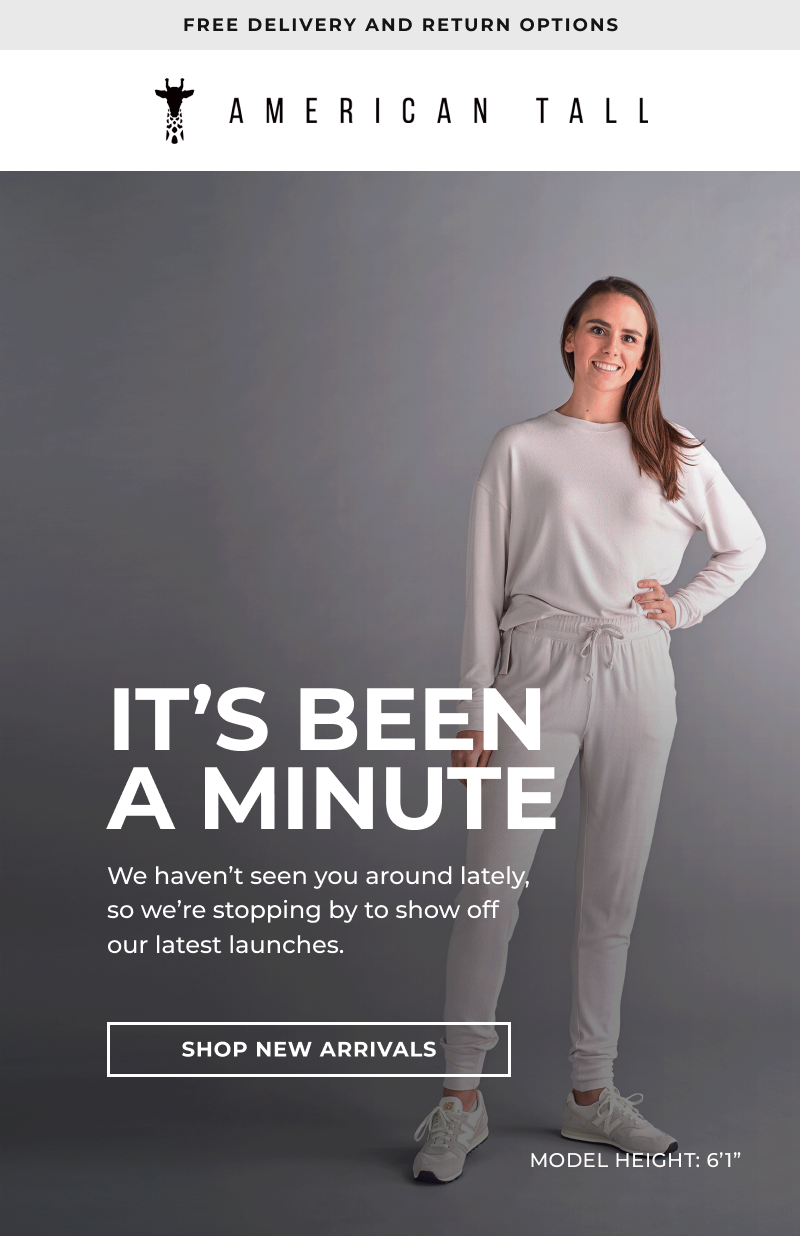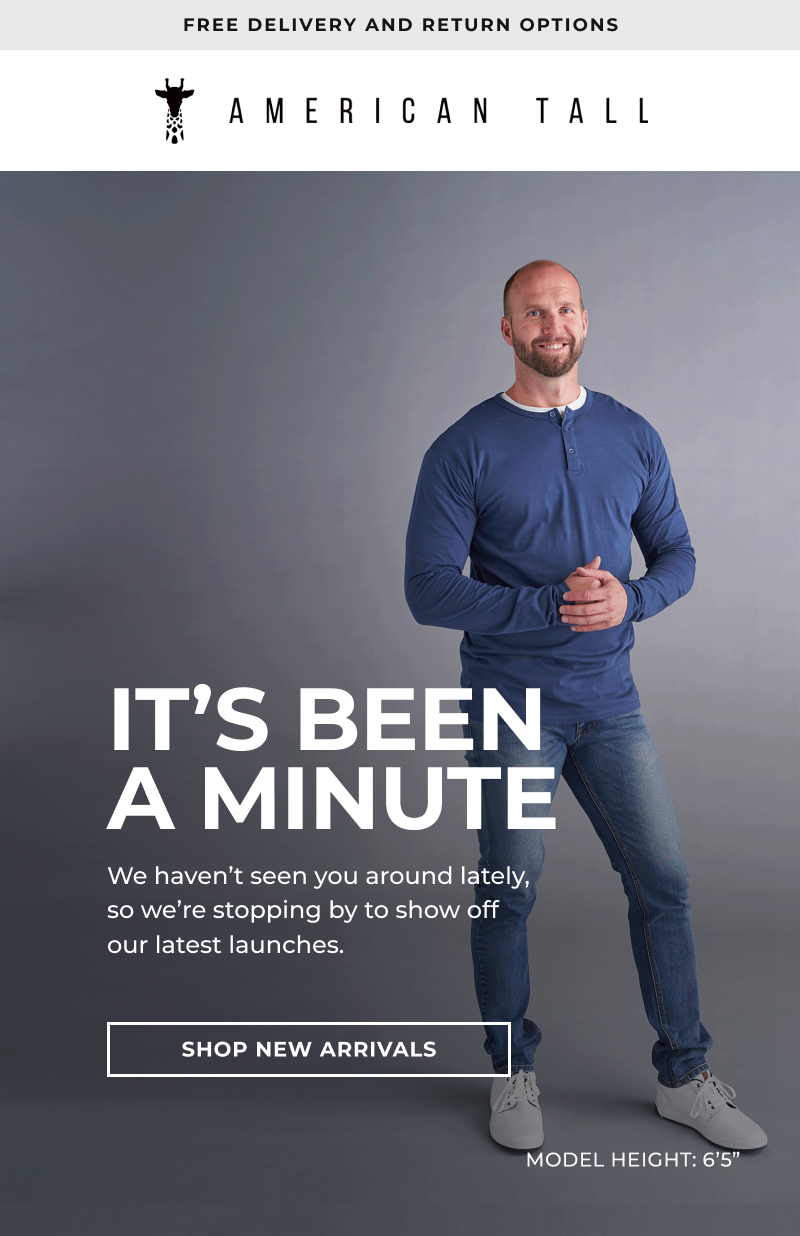Email list cleaning is like spring cleaning—you don’t necessarily look forward to it, but once you do it… Wow it feels great.
And the thing is, it’s not even that bad. You just have to learn how to fall in love with the process.
To keep a clean email list, you have to think about taking care of your email the same way you care for yourself: with good habits and by consistently feeding it great content. You can't wake up one day after years of bombarding your list with fast-food spam because by then it will likely be too late.
I know it can be scary to see hundreds, if not thousands, of users exit your list after cleaning it, but in the end it’s a good thing for your business.
Not only will it help increase the deliverability of your email marketing campaigns, but it means more customers are getting access to your great content—and converting from it.
It may not be spring, but if you’re ready to dive into improving your email marketing strategy then cleaning your email list is a big part of that. That's why I’m here to help.
What does cleaning your email list mean?
Cleaning a list means removing anybody who isn't engaging with your emails (even if they buy, if they don't open anything they shouldn't be on your list.) These unengaged contacts are only bringing your deliverability and open rates down, so it's time to remove them.
You need to do some segmentation work to understand who is unengaged. Once you do that, either remove contacts if you know there’s no chance of winning them back over, or try one last attempt with a plain-text, very engaging sunset campaign (e.g. high discount code, great subject, personalized content).
If this doesn’t work, it’s time to remove them.
Caring about your email list’s health is key for your conversion rate
Think of it this way: sending to an unhealthy email database will inevitably lead to decreasing open and click rates, which tells your inboxes that your emails are not wanted.
In return, inboxes will start flagging all your emails as spam, meaning engaged and unengaged subscribers alike will no longer receive your updates. Yikes.
Automated experiences will greatly help with your overall list engagement. These emails react to your customer's actions with content specifically relevant to their situation. So you'll definitely want to rely heavily on your triggered emails for communication.
But what happens to businesses that don't care about email hygiene? I'll give you a hint: nothing good comes out of ignoring these best practices.
Here’s what happens when you don’t clean your email list
Growing your email list is one thing, but managing it and keeping it clean is a completely different beast.
It’s not a simple task—especially when cleaning your list is never a one-and-done situation—but if you don’t prioritize your email list hygiene, it can be hurtful to your business in a few ways, including…
- Damaging your email sender reputation: This is a score assigned to organizations. The higher the score, the more likely it is that your email will properly land in your recipient’s inboxes. Spam traps, fake emails, spam reports, low open rates, and high bounce rates all impact your reputation, and an unclean list list leads to all of the above.
- Increasing the number of spam complaints you get: Email providers will automatically put your emails in recipient’s spam folders if they think you’re sending spam emails. This happens when too many people flag your emails as spam to their service provider, and can lead to your emails being blocked completely—even by users who want them. You should remove these users from your list, and automatically suppress unengaged users from your campaigns.
- Increasing the number of email bounces you get on campaigns: Like I mentioned before, this will impact your email sender reputation, causing your campaigns to hit spam folders or get blocked by users in general.
In the end, all of this only hurts your email deliverability rates. And as you now know, deliverability has a direct correlation with your overall conversions.
When is it time to do a list clean-up?
You should run a list clean-up once a year, at least. Depending on the tool you use (like Klaviyo, Mailchimp, or another ESP), you can automate some of it to automatically "Sunset" profiles who haven't engaged in a set amount of time.
(We’ll get more into Sunset flows later on, so stay tuned).
But generally, if you’re noticing a change in any of these metrics, it may be time to clean up your list:
- Unsubscribes
- Open rates
- Click-throughs
- Spam complaints
As yourself questions like, are your metrics above industry average? Are they below? Are you seeing changes compared to your usual data? Are they good changes?
Answering these may help you discover any new patterns that are indicating you should review your list hygiene.
Also, keep in mind, for most email lists, the average unsubscribe rate is between 0.2% and 0.5% per email sent. If you're in that range, you shouldn't worry too much. If you're higher than 0.5%, consider cleaning your list.
Now that you see the importance of a healthy, growing email list, it’s time to dive into how to actually clean it.
8 best practices for email list cleaning and general hygiene
No judgement here, but chances are you’re in need of a good list clean up.
I get it, it’s easy to forget about your list over time. I’ve been there, you’ve been there—everyone’s been there. If you’re ready to take the reign and clean it up, start with reviewing your welcome flow.
1. Always give a warm welcome to new subscribers and send regular updates
For general list hygiene, start by making sure that anybody who signs up to your list gets a warm welcome. Otherwise, they'll forget about you and won’t open anything you send in the future.
In parallel, thoughtful campaign emails will also strengthen your relationship with customers and can generate a big chunk of revenue. You'll want to send newsletters to communicate time-sensitive and engaging value with your audience. Yet, you need to make sure you share it with people who are interested in your content.
Why does this matter for keeping a clean email list? Because building immediate engagement is important to help you see which subscribers are inactive overtime. If you get all of these email signups but never interact with them, your data isn’t going to be accurate enough to know who’s unengaged.
2. Segment customers intelligently
The number one best practice for keeping a healthy list is to segment it intelligently. Every good email service provider will have the capability to do this.
The easiest way to protect your deliverability is to send a majority of your campaigns to an engaged segment only, so you can maintain an average open rate higher than 20%.
For instance, you can single out readers who have opened and clicked your emails in the last 90 days. Once in a while, you'll want to open up that segment to the less active readers (eg. for Black Friday deals). But most of the time, if you have healthy automation and someone hasn't opened anything recently, you shouldn't bother them with general updates.
(Note: be careful with iOS15 open rates. These can't be trusted for Apple Mail readers.) With this method, your goal is to bring your open rate up to a safe range (>20%)
3. Understand what your customers are interested in
Next, you can get more specific with your segmentation by understanding what your customers are interested in. Either analyze their purchase habits or ask them directly what they want to read about. That way you give them a chance to control the incoming updates, and this kind of zero-party data helps you personalize your flows and campaigns better.
4. Send sunset campaigns
If someone has been on your list for a while (perhaps a year) and hasn't opened any of your sends since then, it's likely time to part ways. You can try one last-ditch effort with what is called a Sunset Flow.
Think of it like a re-engagement campaign. Your goal here is to try and get the user to open the email. If they don't, you can suppress them. These campaigns will get very low opens, so be careful to time this right—like NOT right before Black Friday.
Here’s an example:
You can also simply ask unengaged users if they want to “renew their opt-in.” In this case, send these users an email saying you noticed they haven’t engaged in your emails in while, and simply ask them if they’re interested in staying subscribed.
You can add a button that opts the customer back in if clicked. But if they don’t engage with this email at all, remove the user in two weeks.
5. Create a suppression list
Email scrubbing isn't always the answer. Instead, suppress inactive subscribers rather than delete them.
Suppressing profiles means you no longer pay for them, but you keep all their data in case they decide to subscribe again in the future. If you delete them, you lose all their historical interactions with your store and emails.
Note that Klaviyo automatically suppresses hard bounces (email addresses that are wrong and will never receive messages). Klaviyo will also automatically suppress email addresses that soft bounce seven times in a row.
Note: soft bounces occur due to temporary delivery issues; perhaps the inbox is no longer active or is full?
6. Be consistent in the value you send
Of course, on top of all of this, you’ll maintain a healthy, growing email list by consistently sending high-value, engaging content that follows marketing automation best practices.
At the end of the day, if all you’re doing is sending repetitive, boring emails even your most loyal customers will get tired of it and stop opening.
7. Create a preference center
Customers don’t want to be emailed about promotions or product launches that aren’t relevant to their interests. To make sure you’re giving them a good experience, create an email preference center where customers can tell you exactly what type of content they want to receive from you (and what product lines they’re interested in most).
And don’t forget that it needs to be easy for users to find their preference center to make these updates. By personalizing the experience, customers may feel more inclined to engage with your emails.
8. Finally, remove unengaged contacts
Choosing which contacts to keep depends on your list history and your customer lifecycle. But generally, you can assume that if someone hasn't opened or clicked inside an email in the last 180 days, they're not likely to start now.
Before sending that next bulk email, clean your list!
With good opt-in strategies in place, cleaning your list should be a breeze! Out with the old, in with the new, right?
If you’re finding you still have low engagement rates even after cleaning your email list, it might be time to consider a few other factors, such as if your emails are being triggered as spam by your ISP (which could be because of your subject lines), if you have duplicate emails, or if you have valid email addresses. Reviewing email best practices to see how you can optimize beyond keeping a clean list should help you improve.
Hopefully you're now thinking about the bigger picture behind your email strategy, but if you read this thinking, “I don’t have time to manage my email marketing like this,” it might be time to bring in professional help.
If you’re interested in a full service email marketing agency, you can connect with our team to see how they can help here.
Good luck!


